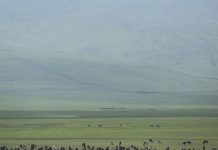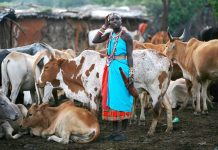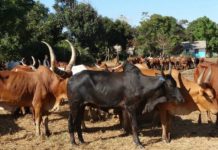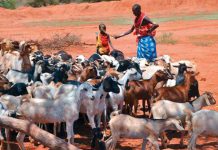Author: FATMA ABDU
AfricaPress-Tanzania: MINISTRY of Livestock and Fisheries has embarked on a new strategy of improving cattle breeding by using artificial insemination aimed at bringing changes in the sector.
Available data show that the country is home to 21.3 million large cattle population which makes it the biggest in Eastern Africa.
However, 97 per cent of all animals are kept by small holders who are often faced with poor productivity due to indigenous breeds—constituting 99 per cent of all breeds.
The ministry’s Production and Marketing Department, Assistant Director, Abdallah Temba, said at the ongoing NaneNane exhibition held here that they are aiming at increasing and improving the quality of dairy and meat products.
Arusha’s National Artificial Insemination Centre (NAIC) is “now using the technology to boost livestock sector in Tanzania,” he said.
Artificial insemination technology is the process of collecting sperm cells from a male animal and manually depositing them into the reproductive tract of a female. It allows males to produce more offspring where fewer males are needed.
Mr Temba further said that the technology helps in preventing the spread of certain diseases and sterility due to genital diseases.
NAIC has already bred a number of bulls, including Freudian, Red Reisian, Ayrshire, Jersey, Simmental, Sahiwal, Fleckviel, Boran and Mpwapwa.
Nashon Jirab, a pastoralist from Butiama in Mara, said the technology is good since it helps to increase the production of dairy and meat.
Studies showed that an indigenous breed cow has the capacity to provide only 2-3 litres of milk daily while improved breeds—such as Jersey or Holstein—can give as much as 7-10 litres of milk.
With improved breeds, small-holder farmers can significantly increase their income by 300 per cent using technology like artificial insemination.







